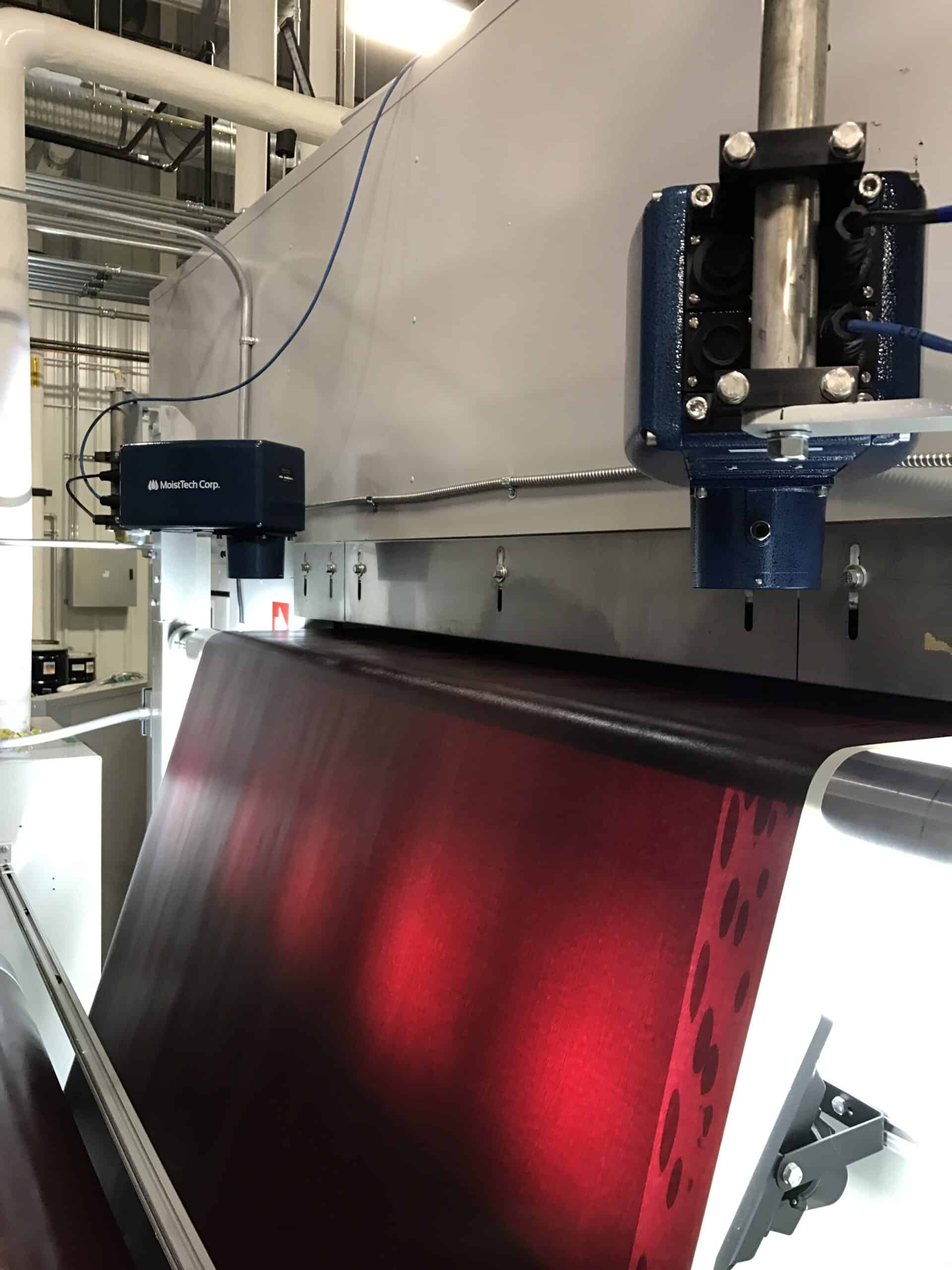Hot Melt Moisture
Near-Infrared Moisture Control
Hot melt pressure sensitive adhesives represent a distinct category of bonding materials utilized across various industrial sectors and consumer goods. Although they are solid when at room temperature, these adhesives quickly melt into liquid form, allowing for precise application onto desired bonding surfaces. Once cooled, the adhesive hardens to create a durable bond between different materials.
Hot melt glues and adhesives provide a crucial advantage in various industries such as packaging, converting, assembly, bookbinding, nonwovens, and footwear. Unlike water-based or solvent-based adhesives, hot melt adhesives offer the benefit of a fast bonding process without the need for lengthy drying times. Once applied, hot melts begin to bond almost immediately as they cool down and solidify. This rapid solidification makes them perfect for use in highly automated manufacturing lines that require quick bond formation. Initially, paraffin wax was widely recognized as the original hot melt adhesive coating. However, the introduction of polymer and copolymer resins has led to the development of numerous formulations with diverse performance properties, continuously expanding the possibilities of hot melt adhesives.
Measure Today With Unparalleled Precision

Product Quality Monitoring
Roll coaters, die coaters, and doctor blade configurations are some of the various methods used for applying hot melt adhesive. Roll coaters provide more flexibility compared to die application methods, allowing for quicker changeovers and pattern coating. Die coaters, on the other hand, offer greater precision, particularly in the 15-20 grams/meter2 (GSM) range. It is crucial for manufacturers to apply the right amount of hot melt adhesive for optimal bonding, as excess adhesive not only increases costs but also negatively impacts bonding performance. Utilizing NIR sensors for on-line hot melt coating measurement can enhance start-up efficiency, reduce waste, and improve quality control and assurance.
The IR3000 has a proven track record of successfully measuring hot melt coating for more than twenty-five years. Positioned 4-12 inches above substrates such as paper, plastic, or nonwoven materials at an 18° angle from perpendicular, the NIR non-contacting hot melt sensor delivers exceptional accuracy and stability without any regulatory constraints. With an IR3000 stand-alone sensor, manufacturers can obtain precise fixed point hot melt thickness measurements.
Typical moisture accuracy is about ±0.05%, coating thickness accuracy varies from 0.1 to 0.01 micron depending on coating type. Typical analog range is 0-10% moisture and up to as much as 40%, subject to application.
PERFORMANCE
Unsurpassed in performance, our sensors can accurately measure moisture within tenths of a percent of most applications
STABILITY
MoistTech sensors withstand the test of time and are low to zero maintenance
RELIABILITY
Rely on MoistTech’s NIR moisture sensors to never drift or need re-calibration
COST OF OWNERSHIP
A moisture measurement system is essential for the production process and in some cases will pay for itself in less than 30 days
What is the Solution?
There are many locations throughout manufacturing that our sensor can be used. These locations are often determined by the space availability and accessibility on the machinery as well as manufacturer’s control plan. After installation of the IR-3000C, a manufacturer can continuously monitor the process and control the thickness and moisture content either manually or automatically from readings of the IR-3000C online sensor.
The utilization of NIR technology in measuring hot melt coatings expedites the commencement of operations, enhances productivity, minimizes waste, and enables the storage of valuable quality data based on individual rolls or production runs. In the absence of an online measurement system, the line needs to be initiated and samples collected for laboratory analysis. This process is repeated until the system is fully optimized. Conversely, with the presence of an online system, the optimization occurs in real-time, resulting in improved efficiency. The Ethernet-based quality data archiving, facilitated by fixed sensors, allows for the association of rolls or runs with specific startups, shifts, or operators, thereby potentially safeguarding against unwarranted customer complaints.
Assess
Locate the point in the production process in which measuring moisture will be the most crucial and beneficial. Identify how you will use the moisture measurement data for improvements and if it will tie into your PLC.
Remember this could involve more than one installation point!
Develop
A closed loop process is achieved by incorporating a moisture measurement system into the manufacturing process. Developing a proactive solution to moisture control will avoid costly downfalls.
Support
MoistTech’s experts will assess your specific application with lab tests, calibrations and accuracy results to ensure our equipment will peform for you. All of our sensors are pre-calibrated prior to being shipped to create a plug-and-play operation for the end-user.
Contact
We offer service and support throughout the world for our moisture measurement sensors and would be happy to connect you with a rep in your area. Contact us today for more information!
Understand the Process
Moisture control on the production line creates large savings in a little amount of time. Measuring moisture during the production process vs. batch testing after, will create higher yield for the end product usage. Immediate ROI is seen with the installation of a moisture measurement system as the plant controllers can instantaneously notice the reduced waste, energy usage & overall increase in product quality.
